Before digital circuitry was cheap, Nissan used little vinyl records to make cars talk.
Nissan Voice Warning Phonograph
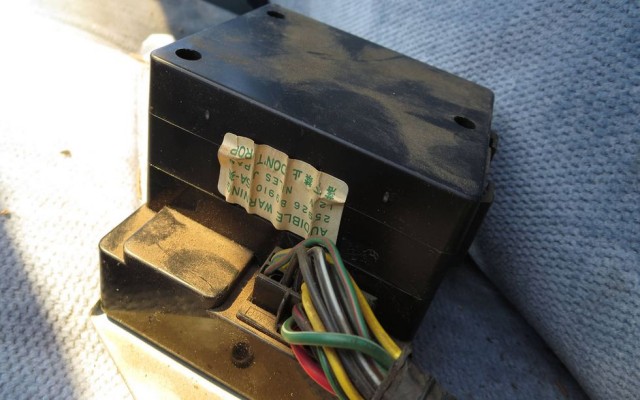 Photo: Murilee Martin
Photo: Murilee Martin
When I hit the junkyard, one thing I always look for is any 1981-1984 Datsun/Nissan Maxima, 200SX, or Z-car. That's because many of those cars came with Nissan's patented Voice Warning system, a feature that gave the car a breathy female voice to tell the driver about open doors, low fuel level, and other areas of concern. Just this month, I found an '84 Nissan Maxima in a California self-serve yard and I grabbed the Voice Warning box for my collection. Why do that? Because this system used an ingenious miniature phonograph record and all-analog control circuitry to make Nissans talk, and it's one of the coolest pieces of hardware you can find in a junkyard.
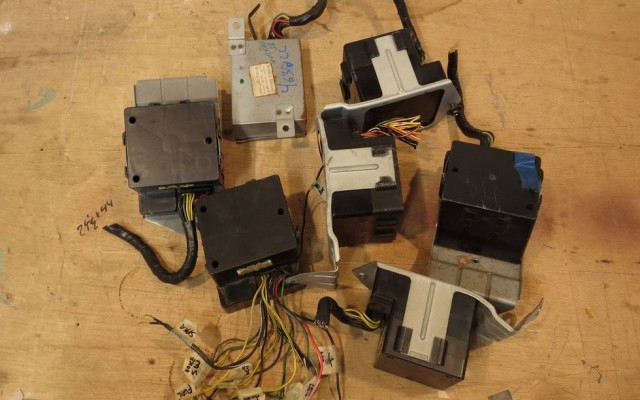
Six of the phonograph-based Voice Warning boxes from 1982-84 Nissans, plus a solid-state unit from a 1985 Maxima. Photo: Murilee Martin
I have my Row52 junkyard-parts-tracking account set up to let me know when any yards near me have a possible Voice Warning system-equipped Nissan, and over the years I've managed to acquire six of the phonograph-based units plus a single 1985 digital unit (which plugs into the same harness connector but uses chips instead of a phonograph record). I plan to set up an all-Nissan DJ station and do some Voice Warning scratching when I revive my old noise band.
When the key is in the car's ignition switch and the Voice Warning switch is activated, the little record inside the Voice Warning box spins; this record has six parallel grooves, each with a different short message. When the correct inputs are sent to the box (via a complex logic system I haven't yet fully unraveled), the needle drops on the start of the appropriate groove and the message plays. The woman speaks vaguely American-accented English, though with a strange pronunciation of "parking brake" as "bocking brake." I find the way she says "right door is open" oddly compelling. If I had an '82 Maxima, I'd leave the right door open just to hear that message.
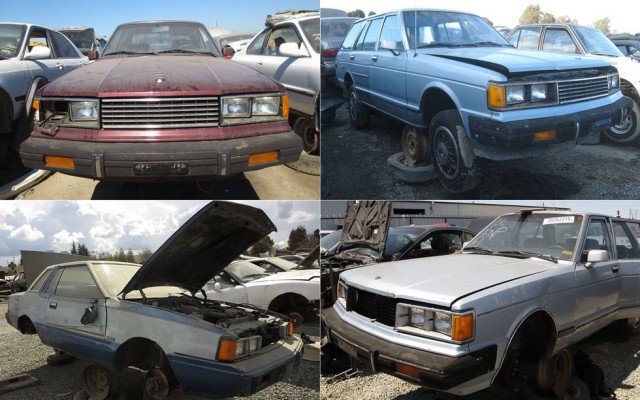
Here are some of the cars that yielded Voice Warning boxes for my collection. Photo: Murilee Martin
I have heard that there were Japanese-market appliances of the late 1970s and early 1980s that used this system to issue messages to users, and the size and six-groove nature of the phonograph records in the 1977 Mattel Monday Night Football game suggests that the same technology was used in some toys of the period. Whatever the case, when I see a possible Voice Warning box donor in the junkyard, I check for the telltale control switch on the dash or center console.
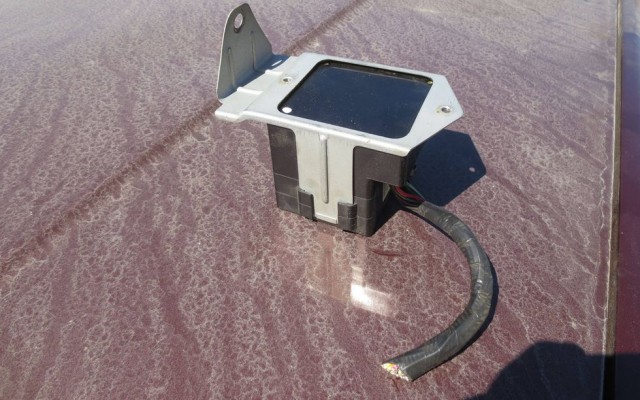
Removing the Voice Warning box is not difficult. Photo: Murilee Martin
If you want to get one of these boxes for yourself, it's not too difficult to remove. On the Maxima, look on the left-side kick panel under the dash on the driver's side, remove the three screws, cut the cable, and it's yours. Some junkyard cashiers will assume it's a "car computer" and might try to charge you fat ECM prices, but point out the "Voice Warning" sticker on the box and say it's a warning buzzer.
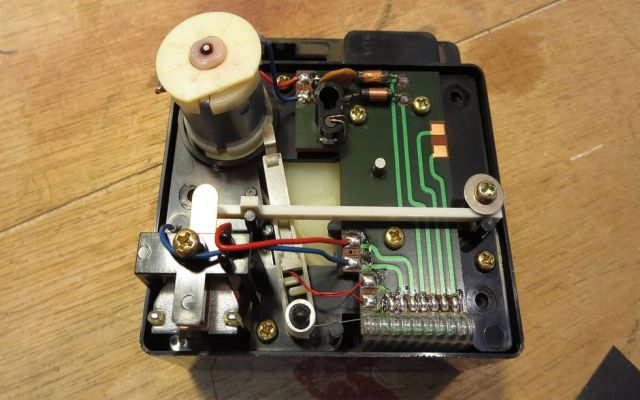
It's an amazingly compact and durable piece of hardware. Photo: Murilee Martin
When you remove the cover of the Voice Warning box, you see this. There's a motor to drive the phonograph record via a rubber belt, a tiny tonearm with a relay-style coil to push it against the record, and a bit of circuitry to control everything. You'd think that a device with so many delicate moving parts would be flaky in the real world, but every one of my half-dozen 30-plus-year-old phonograph-based Voice Warning boxes can be induced to play at least one alert. Orientation of the box doesn't matter, the extremes of temperature and vibration found in a car don't seem to bother the mechanism (although I'll bet the record will skip if you drive over a big bump while it's playing), and the entire rig is a masterpiece of packaging and design.
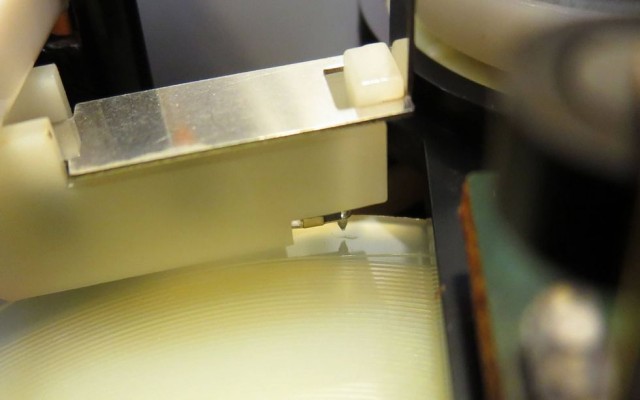
The tiny phonograph needle still works after 31 years. Photo: Murilee Martin
In fact, the only one of my Voice Warning boxes that doesn't work is the all-digital one I grabbed from a 1985 Maxima. I suspect that, unlike the phonograph units, it doesn't have its own amplifier and relies on the amplifier in the car's radio, but I won't know for sure until I open it up and/or get an '85 Maxima wiring diagram. Not that I'm all that enthusiastic about the solid-state Voice Warning unit, because I prefer my talking Nissan to have a proper record-player tonearm and needle.
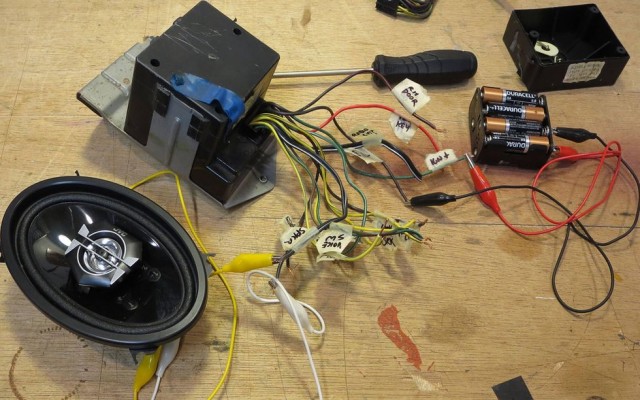
So far, all I've done is bench-test my Voice Warning phonographs like this. Photo: Murilee Martin
The next step is to work on controlling the tonearm and drive motor with joysticks, so I can do some 1980s-DJ-style scratching on a mixer-controlled array of Nissan Voice Alert boxes. For now, I just touch wires together to emulate the conditions in an early-80s Nissan.



